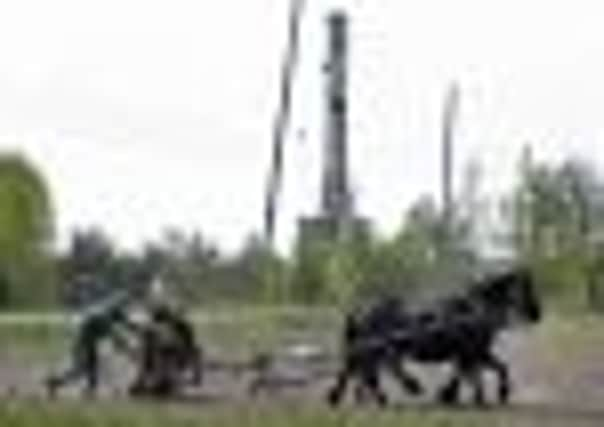Andrew Arbuckle: Poles apart but in the same boat when it comes to CAP


THE LANDING strip is wide and long but contains no aircraft. Instead, both sides are filled with farm machinery. There they are; rows of tractors, clusters of combines and whole ranges of cultivators all gleaming and glistening in the autumn sunshine.
I, along with a dozen or so agricultural hacks from other member states, am in Poland courtesy of the Polish presidency of the European Commission. On the outskirts of Poznan, this is the largest agricultural machinery exhibition in Poland and with more than six hundred exhibitors on the disused airfield, it is claimed to be the third-largest in Europe.
Advertisement
Hide AdAdvertisement
Hide AdAll the main international agricultural machinery companies are present and the equipment we see could be in any other country that has a vibrant and large agricultural economy.
There is an upbeat tone to the event. The talk is of the increased Common Agricultural Policy cash that will be coming to Poland and the other eastern European countries that they are certain will be their lot when the latest CAP reform is settled.
No-one is saying just how much they are expecting but everyone is saying “it must be fair” or “we must now be treated equally with other member states” or Polish words with lots of “z”s in them to that effect.
We are reminded constantly that those countries coming late to the EU did not get an equal share of the CAP last time around.
And wherever there is money or even the sniff of it, there are stands with sharp-suited bankers hovering around. We are told by the organisers there are far more “financial advisers” at this year’s event.
The journalists are then bussed to see projects where EU support funding has been awarded to farms. We travel for hours through land as flat and fertile as I have seen anywhere in the world.
As we travel and remember this is a European Commission visit and that we are embedded with staff from DG6, the agricultural section of the commission, the gossip turns to the forthcoming CAP reform.
It is certain that the “leaked” document that emerged last month will form 99 per cent of the commission’s proposals that will be formally revealed on 12 October. That means that, among other proposals, we shall see the capping suggestion come forward, putting a top limit to the subsidy any single individual business may receive.
Advertisement
Hide AdAdvertisement
Hide AdAs we look over the flat Polish landscape and wonder how they will cope as they have some tremendously large units as well as a million and a half small farms, the answer possibly lies in the subsidiary proposal that direct labour costs can be subtracted from the total before any slicing takes place.
I know that there are some 800 or so farming businesses in the UK that will be affected by the capping proposal and both the Scottish and English unions have already squawked against it. But it seems to me to be one idea that has little public and possibly government sympathy, especially as the money taken away from the “big boys” will be recycled by the member state.
As we wend our way across the landscape on our lengthy bus trip, the talk drifts into other proposals such as the “greening” of the CAP; the arrival of Environmental Focus Areas which to my mind is “Set Aside mark two” with 7 per cent of the land taken out of production; the 70 per cent maximum in any one crop on one unit; the permanent pasture problem; the problem of small-scale farmers and more CAP minutiae. With so many policies coming along, my mind drifts.
The bus trip may be long and the roads are rather bumpy but this is nothing compared to the journey the CAP debate still has to take. Next week may see one more step in the journey but it will take another 18 months or two years before the latest manifestation of CAP is settled.
So far, we have only seen the views of the parliament and the leaked views of agricultural commissioner Ciolos. Ministers from member states have still to come to the discussion table.
But possibly the biggest influence on the next CAP is one that only a few commentators such as former union presidents George Lyon and Jim Walker have identified and that is the role of European finance ministers.
So far there seems to be a happy disregard of the size of the CAP that will be available for slicing up.
I believe that under the present economic turmoil it will be lucky if it survives unscathed. I further believe it is much more likely that finance ministers will want to cut a fair slice of the CAP pie.
Advertisement
Hide AdAdvertisement
Hide AdAnd just as we complete our round trip back to base, I wonder if it is the same bankers now offering loans to Polish farmers who got the whole western world in its current economic mess and if they are equally wrong with their optimism this time.